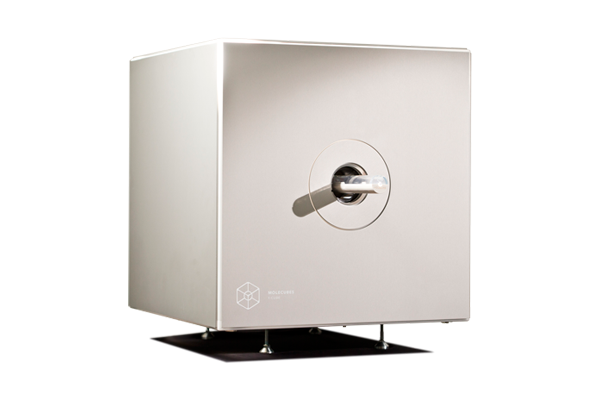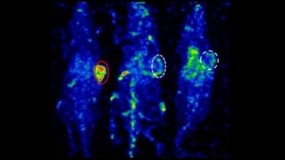The β-CUBE is a high-performance preclinical PET imager to track and quantify molecular processes
By labelling peptides, proteins, antibodies and many small molecules, with a radioisotope, virtually any molecular process can be imaged non-invasively and longitudinally with a PET imager.
With use of commercially available radiolabels, PET imaging enables you to look at, and quantify, in-vivo compound bio-distributions, drug ADME profiles, receptor binding, and much more.
Intuitive and wireless acquisition software combined with our multimodal small animal bed allow for easy and modular multimodal imaging along with the γ -CUBE (SPECT) and X-CUBE (CT).
β-CUBE preclinical PET imager specifications
|
γ-CUBE |
X-CUBE |
β-CUBE |
|
| GP mouse protocol | |||
|
Field Of View
axial x transaxial
|
12mm x 30mm | 35mm x 63mm | 130mm x 72mm |
|
Spatial Resolution
*general purpose mouse collimator
|
< 0,6mm | 0,05mm | < 1mm |
| Sensitivity | 0,12% | - | > 10% |
|
Reconstruction Code
on board GPU-based
|
3D MLEM, 3D OSEM | FDK, ISRA | FBP, 3D MLEM, 3D OSEM |
|
Weight
over footprint of 54cm x 54cm
|
< 80kg | < 100kg | < 90kg |
Existing β-CUBE customers
Click on the tabs below to find out more about our customers, and how they are using the β-CUBE in their facilities.
Documents
-
Molecubes Brochure 2022
Download (3.66 MB) -
Molecubes - REMI External Reconstruction Server
Download (1.42 MB) -
Molecubes - Mouse Hotel
Download (1.64 MB)









